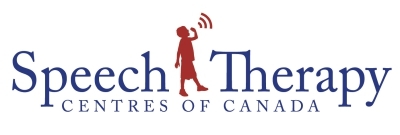
The Speech Therapy Centres of Canada (www.SpeechTherapyCentres.com), in light of the recent 20/20 interview on April 24 and upcoming Vanity Fair feature with Olympic gold medalist and celebrity Caitlyn Jenner, formerly known as Bruce Jenner, is releasing a statement to raise awareness on the role speech therapy can play in a person’s gender transition and how it can help address gender dysphoria.
Speech therapy is part of a complex approach to overall gender health. The main goal of speech therapy is to change speech so that the clients’ speech represents his/her sense of self. (Source: Davies, S. and Goldberg, J., Transgender Speech, Feminization/Masculinization: Suggested Guidelines for the BC Clinician, 2006, page 1; http://www.cpath.ca/wp-content/uploads/2009/12/guidelines-speech.pdf.)
“Voice is part of how we present ourselves and see ourselves, but not something people think about very often,” explains Jeanette Podolsky, clinical director of The Speech Therapy Centres of Canada. “The best comparison I can make about voice and gender health is the strange way one’s voice sounds when we hear it on a recording. Now imagine feeling that every time you spoke to someone—being very aware of that disconnect and how self-conscious and uncomfortable it makes you.”
Transgender individuals often seek assistance to make their manner of speech and tone of voice more feminine or masculine. They may also seek speech therapy to address specific voice quality aspects following certain stages of their transition.
“Others might need assistance dealing with a change in singing or pitch range,” notes Podolsky. “There are surgical methods that can change a person’s vocal pitch. But some may still require assistance with therapy to adjust to their new pitch. Other aspects may include working on non-verbal communication, such as gesture and facial expression.”
What transgender individuals seek from speech therapy can vary greatly. Some desire to maximize feminine or masculine elements, while some prefer to foster two different speech patterns if they consider their trans-self to be a different identity.
“Developing two speech patterns is not easy, but it can be done. Actors, for instance, can develop separate accents and cadences to their voice for a role and many people use different patterns when speaking bilingually,” Podolsky continues.
Podolsky emphasizes the importance of being aware of a transgender client’s unique needs, stating, “The speech-language pathologist, or S-LP, needs to understand the client’s preferred pronouns, along with how they perceive themselves and their overall goals. Speech therapy must be individualized. A detailed assessment by an S-LP is required before the treatment process begins. The S-LP will discuss the risks and benefits of the different treatment options. For instance, the S-LP will determine whether the client can reach a certain pitch that is desired by the client.”
An understanding of how the transition process will affect the progress of speech therapy is also important. It’s very possible that the speech therapy will be taking place alongside other elements of the transition. Podolsky paraphrases Transgender Speech, Feminization/Masculinization: Suggested Guidelines for the BC Clinician, noting that “the need for speech services should be evaluated based on hormonal use, pursuit of sex reassignment surgery, or length/percentage of time cross-living.” (Source: Ibid.)
“Transgender speech therapy remains an evolving sphere of speech-language pathology and will continue to refine and develop therapies to better serve the unique needs of the transgender community,” Podolsky concludes.
To learn more about The Speech Therapy Centres of Canada and the different forms of speech therapy available, visit their web site at https://speechtherapycentres.com.
